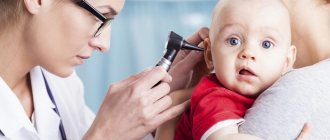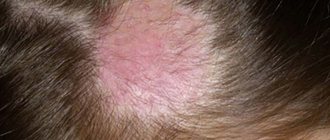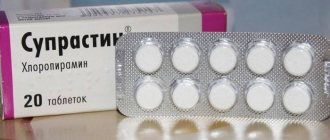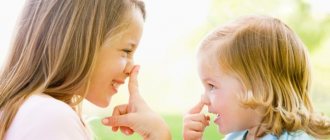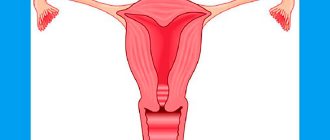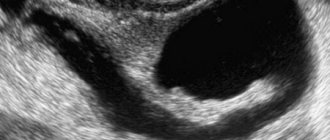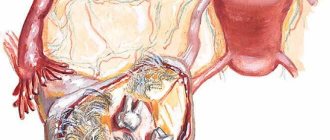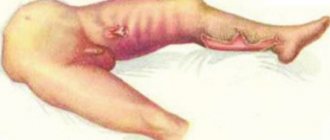Children are a source of great joy, but also a lot of worry. It is difficult to keep track of a child, and therefore he can often climb somewhere and catch some kind of infection. We have often seen how a child reaches out to pet a cat or dog on the street, but this can be quite a dangerous activity.
What to do if you find lichen in a child, how to deal with it? We will look at all this and much more today.
What does ringworm look like?
If you look at a photo of lichen in children, you will notice that it has the same appearance as in adults. Often simply in a weaker reaction. This means that the reasons for its appearance are absolutely the same as in adults.
Most often, lichen is presented in the form of round spots on the body, the skin on which dries out and begins to peel off severely. They can reach five centimeters in diameter, and the process is often accompanied by irritating sensations, such as itching or even mild pain.
Ringworm most severely affects exposed parts of the body, such as the lower back, abdomen, hips, shoulders, chest, back, and arms.
Diagnostics
Making a diagnosis is not difficult; often this procedure ends with collecting an anamnesis, but sometimes difficulties arise.
At such moments, use the following methods:
- Belzer's test - the procedure consists of applying 5% iodine (sometimes replaced by aniline dye) to the skin, where the fungus has loosened the skin, the intensity of absorption will be higher, and accordingly the skin will be more colored.
- Beignet's symptom (chip method) - scraping the upper layers of the skin even with a fingernail leads to the separation of dead upper scales.
- Wood's filter - transillumination of the skin with a mercury-quartz lamp, which in a dark room causes the colony of the fungus to fluoresce in red, yellow, brown or their shades.
- Microscopic examination - the scraping is treated with a 20-30% alkali solution (NaOH or KOH), which gives a reaction discernible in the laboratory.
Sometimes the doctor is faced with the question of differentiating lichen iridescent from pink lichen of Zhiber, true syphilitic leucoderma, syphilitic roseola; at such moments, correct and high-quality history taking is very important. For reliability, it is better to confirm this diagnosis with other specialists.
Ringworm on the face
It is especially difficult for a child to experience the appearance of lichen on the surface of the face. This is often accompanied by severe stress and constant psychological pressure caused by flaws in appearance, even if temporary. At this time, you need to understand not only how to identify lichen in a child, but also how to communicate with him at this time.
It is important to explain that there is nothing wrong with this, and that the skin defect will pass, and therefore there is no need to feel worse than the children around you.
Read here: What lichen looks like: 130 photos of the main types and forms of the disease. Video recommendations for treating different stages of the disease
The psychological state plays an important role, because under the influence of severe stress the child’s immunity can weaken, which will only intensify the inflammatory reaction from lichen.
Folk remedies
Doctors do not advise self-medicating a serious illness at home. Folk remedies for lichen are different, and some of them can cause significant harm. You can use your grandmother's recipes, which have a non-aggressive effect, easing the condition of the skin. Before doing this, you should definitely consult a doctor. Here are some simple options for eliminating a fungal infection:
- Crushed dried celandine (5 tablespoons) is poured with boiled cold water (1 liter). The mixture is brought to a boil and cooked for 10 minutes over low heat. The medicinal decoction is infused for 2 hours, filtered through gauze. Compresses are applied to the spots several times a day.
- Apple cider vinegar, undiluted, is also applied to the affected areas of the skin. This procedure is performed 4 times a day. The product helps get rid of itching and burning. The lichen infection gradually disappears from the face, the skin becomes clearer. The results of treating the disease are positive.
- You can make an ointment based on natural ingredients. First, a decoction is made from burdock roots, hops and calendula flowers in equal parts. The resulting liquid is combined with Vaseline in a ratio of one to two. The product in the form of an ointment is carefully applied in a thin layer to the patient’s lichen rashes several times a day. This type of treatment significantly improves the condition of the facial skin.
- You may need a bottle of licorice syrup or a decoction of its root. This folk remedy for lichen perfectly strengthens the immune system, which helps to quickly get rid of the pathology.
Causes of lichen
To understand how and how to treat lichen for children, you need to understand the sources of the problem. Ringworm appears as a result of a certain type of virus coming into contact with the skin.
This happens from the simplest contact, direct or indirect. You can get infected not only from other people, but also from animals.
Particularly dangerous in this regard are stray animals that do not have medical supervision and care. Among them, lichen spreads quite quickly, which is why many people, including children, can become infected.
Weak immunity can cause infection. In many cases, minimal contact may not pose a threat because the body's immune system quickly copes with the virus. After a cold or serious illness, a child’s body can become very weak, making him more susceptible to external threats.
Here you can add allergies, increased sweating during hot periods of the year, physical damage to the upper layers of the skin and much more.
Prevention
- Avoiding tactile contact between a child and street animals.
- Monitor the health of the pet if it has access to an outdoor environment.
- Refusal to share hygiene items, clothing, and hats.
- If a child is suspected of having a disease, isolate the child as soon as possible and immediately seek medical help.
- Periodic preventive examinations in places of permanent or temporary stay of children.
- General restorative measures: a balanced diet, sufficient exposure to fresh air, moderate regular physical activity, etc.
Video from YouTube on the topic of the article:
https://youtu.be/5MaiZG3G-Xo
Types of lichen
If you suspect lichen in a child, you should consult a dermatologist as soon as possible. He will be able to give you good advice on how to properly treat lichen, immediately after he determines its type and cause.
There are six common types of lichen - ringworm, vermilion, tinea versicolor, versicolor, pink and scaly.
All these types have a number of features, which consist both in appearance and in the symptoms that accompany them. In addition, the type of treatment may differ, as well as medications and ointments for lichen. Next, we will look at some of the most frequently encountered types in a little more detail.
Folk remedies for lichen in children
Birch tar shows good results in treating the disease. Many people are put off by the strange smell, but this does not stop doctors from using it in official medicine. It is used as part of the well-known ointment of Vishnevsky, Wilkinson and tar soap. If taking antibiotics is contraindicated, then you can, on the recommendation of a doctor, turn to this folk remedy. Birch tar eliminates pathogenic microflora, heals damage, and acts as a natural antiseptic. Other folk remedies also help in the fight against the disease:
- birch buds;
- propolis;
- castor and sea buckthorn oil;
- burdock root;
- garlic;
- birch charcoal;
- raisin;
- apple cider vinegar.
Raisin
Professional dermatologists recommend using raisins for lichen in a comprehensive course of therapeutic treatment. Raisins should not be used internally, although this is also very useful (they are rich in B vitamins and nicotinic acid), but externally. To do this, you need to rinse the dark, seedless raisins and slowly rub the skin and the area around them. The substances contained in the berries are harmless to humans, but have a detrimental effect on fungi.
Symptoms and signs of lichen planus
In practice, the very first foci of the disease begin to appear on the arms and legs, usually in the joint area and are dark red or purple lumps (so-called nodules), characterized by severe itching. Over the course of a few days/weeks, the disease may spread to other areas of the body, while symptoms may initially be similar to scabies or other skin conditions. In approximately 1/10 patients, such dark nodules may appear on the skin in groups, and as the disease progresses, some of the lumps will disappear, while new forms will appear around them. In appearance, such a manifestation of the disease will resemble a ring, which is why it is called the ring-shaped form of lichen planus. On the joints of the fingers and ankles, such seals can be harder and thicker, as a result of which this form of the disease is called warty. The vesicular form of lichen planus is expressed by the manifestation of fluid-filled blisters at the site of foci of lichen planus, and is most often observed on the legs, buttocks, back or in the mouth. In addition, lichen can be observed on the oral mucosa and even on the tongue. Often, foci of the disease in the mouth are small lumps that do not show any symptoms. However, in some cases, the symptoms of such lesions can be reduced to turning into extremely painful ulcers. This form of lichen disease in medicine is considered erosive-ulcerative. The problem with accurate diagnosis here is that fungus in the mouth can also cause similar symptoms. In ten percent of patients with symptoms of lichen planus, the disease may spread to the scalp
and nails. Moreover, on the scalp, manifestations of lichen will be represented by dark red lumps, covered with dry scales and will be characterized by severe itching. In case of incorrect treatment, there will be a high probability of hair loss. When the disease spreads to the nails, they will become covered with grooves and take on a deformed shape. Moreover, the thickness and color of the nails will change (usually the nails will turn brown). Such symptoms without testing can be very similar to the symptoms of fungal nail disease.
Video about lichen
The experience of a patient who has overcome lichen versicolor. The story of a man who was treated with traditional methods and overcame an illness.
https://youtu.be/22G2ehf8Gq4
Consultation with a doctor about the causes of lichen versicolor in young people. The doctor talks in detail about possible accompanying diseases and risk factors.
https://youtu.be/oxngsB5BryI
The doctor talks about the methods he used in practice to treat pityriasis versicolor and their effectiveness.
https://youtu.be/7NSVx11CDfY
Methods of conducting diagnostic examinations
Diagnostic tests for the presence of infection in a child are carried out by a pediatric dermatologist, mycologist or infectious disease specialist. To confirm the diagnostic assumption, the doctor conducts a visual examination of the child and conducts special tests. To clarify the diagnosis, fluorescent diagnostics are used.
Important addition: Redness of toes and feet: causes and treatment of itching and red spots
Each type of disease has its own specific morphological features. To determine the type of pathogen, skin scraping is performed in the area of infection. The resulting material is examined under a microscope. A mycologist carries out bacterial culture for microflora.
In some cases, to confirm the presence of lichen ruber in a child, it is necessary to do a skin biopsy and a morphological examination of skin cells.
Differential diagnosis of infectious pathology is carried out in a child:
- with psoriasis;
- eczema;
- local manifestations of an allergic reaction;
- childhood infections such as measles, rubella and some others;
- alopecia areata.
After conducting the entire complex of studies and confirming the primary diagnosis, the doctor who conducted the study prescribes a timely and adequate course of treatment.
Risk factors
Pharmaceuticals
Children who are treated with medications for a long time often suffer from the formation of lichen planus. In this case, the child develops lichen planus on the oral mucosa. Therapy using the following means can cause a dermatological disease:
- drugs that eliminate the inflammatory process;
- painkillers: “Aspirin”;
- "Diclofenac";
- Ibuprofen and others.
Stressful situations
Stressful situations can trigger the appearance of lichen ruber in children.
More recently, doctors were able to establish a connection between constant stress in a child and lichen planus. They found that children who are regularly exposed to anxiety and stress, or who live in unfavorable families where they regularly experience emotional shock, are more likely to suffer from pathology than children with a healthy nervous system.
Allergic reaction
Often the triggering factor for lichen planus in a baby is an allergic reaction to various substances. Allergies to mercury contained in mixtures used to install fillings in teeth occur more often. It is extremely rare for children to be allergic to unnatural flavors that are included in children's toothpastes. If lichen red develops due to an allergic reaction, you should show the child to an allergist and get rid of the main allergen.
Possible complications
In the absence of proper treatment prescribed by a dermatologist, consequences may occur in the form of:
- gangrenous condition;
- spread of purulent infection in the body;
- lesions of the central nervous system;
- bacterial infection of the epidermis, leading to scar formation;
- hemorrhagic complications;
- damage to the mucous membrane of the eyes up to blindness;
- transition of the disease to a chronic form with constant relapses;
- the appearance of psoriatic erythoderma, generalized pustular psoriasis, psoriatic arthritis, facial paralysis.
Symptoms of microsporia
Regardless of the form, the signs of lichen in children have a number of similar features:
- incubation (latent period) from several days to several weeks from the moment of infection;
- the presence of skin defects of various colors, shapes and severity;
- peeling, rashes on the skin;
- hair loss.
Features of ringworm on the head of a child:
- in the first days (rarely weeks) after infection there are no symptoms, the only sign of the disease is damage to the hair in the immediate vicinity of the scalp (a white coating resembling a sheath enveloping the base of the hair shaft);
- change in hair structure (dry, brittle, easily pulled out of the follicles);
- lesions (bald spots) are single or multiple, usually small in size - up to 5 cm (small lesions are possible near the main defect with a diameter of up to 1-1.5 cm), isolated, round in shape, covered with “stumps” of broken hair, when trying to smooth damaged hair fragments do not return to their original position, but remain tilted in one direction or another;
- a peculiar smell (“mouse” or “barn”) from the lesions.
https://youtu.be/3f3gcjy_CwA
Ringworm on a child's face is a fairly common occurrence these days. Ringworm belongs to the group of dermatoses of an infectious nature, the causative agents of which can be various representatives.
It is most often caused by fungi and viruses. Ringworm is unpleasant because it is difficult to cover and it causes a cosmetic defect and embarrasses the child.
In addition, the face is a critical area. The skin on it is quite sensitive to scratching, and since facial lichen is accompanied by itching and peeling, there is a possibility of injury to it.
Scratches and microtraumas are one of the reasons for the appearance of lichen; in addition, there is a risk of secondary infection (pustular lesion, etc.).
Experts explain the sudden formation of lichen on a child’s face by the activity of infectious pathogens in the patient’s body. However, scientists have not yet been able to identify reliable information exposing the nature of this disease.
Despite ongoing disputes and disagreements, doctors have learned to cope with the dermatological problem using conservative therapy methods, which has resulted in improved rates of recovery for patients.
Such defects on the body are often accompanied by peeling and unbearable itching, which causes children to have an involuntary desire to damage the already injured skin with their own hands. Scratches can aggravate the course of the disease and provoke the addition of a secondary infection, which can lead to the formation of pustular rashes.
It is possible to prevent complications by timely contacting a doctor, who will correctly differentiate the type of dermatitis and prescribe appropriate treatment.
There is a general list of symptoms that will not allow you to confuse lichen with anything else.
- itching, pain, peeling;
- general weakness and malaise;
- temperature increase;
- the appearance of spots or rashes on the skin;
- enlarged lymph nodes.
These signs may not occur at the same time, but not always. If it happens that your health has sharply deteriorated and spots are observed on your body (examine yourself carefully), then the best solution would be to contact a dermatologist immediately.
Ringworm is a disease caused by harmful bacteria. They live in the bodies of many people, but strong immunity does not allow them to reproduce. The disease begins to manifest itself when bacteria have favorable conditions for life. This usually occurs with vitamin deficiency or while taking antibiotics.
Ringworm on the face is a rare condition and is often confused with dermatitis or an allergic reaction. Lack of timely treatment allows bacteria to multiply. Different types of disease are accompanied by a specific clinical picture. However, doctors identify a number of specific signs that help distinguish lichen from other pathologies.
- The appearance of skin rashes.
- Enlarged lymph nodes.
- Peeling of the skin.
- Temperature increase.
- General malaise.
First of all, you need to consult a dermatologist. Until a final diagnosis is made, it is better to exclude close contacts and use separate utensils and personal hygiene items.
https://www.youtube.com/watch?v=kVLLGr73yYs
To determine the specific type of disease, a comprehensive examination will be required. This includes a blood test, skin scraping and bacterial culture.
Sometimes additional diagnostics are required, for example, to identify pityriasis versicolor. For these purposes, the dermatologist performs the Balser iodine test and examination using a Wood's lamp.
In the first case, the doctor lubricates the spots on the skin with iodine, and after staining, wipes them with alcohol. Infected areas acquire a characteristic dark brown tint, while completely healthy areas remain yellow.
Timely seeking help from a doctor allows you to avoid serious consequences, which include eye infection and complete blindness.
Treatment of this disease is always complex. It usually consists of taking immunomodulators (Dekaris, Reaferon), using local medications and vitamin therapy. If the lichen is caused by a virus or fungus, antiviral or antifungal ointments are prescribed, respectively.
Oral drugs include Acyclovir, Valacyclovir, Griseofulvin, and local drugs include Mycoseptin, Exoderil. It is also recommended to treat areas affected by lichen with a weak solution of iodine or sulfur-salicylic ointment.
When infected with ringworm, hospitalization is mandatory. Home therapy also implies complete isolation of the patient.
If the doctor has confirmed pityriasis rosea, no specific treatment is required. Typically, this form of the disease disappears on its own within 5-8 weeks. To reduce unbearable itching, you can take Tavegil or Zyrtec.
Is lichen planus contagious?
Lichen planus is considered a non-infectious disease, unlike the more “popular” varieties of this disease, and as a result cannot be transmitted from a sick person to another person. On the other hand, it should be noted that most people with symptoms of lichen planus additionally suffer from viral hepatitis C, which, in turn, is a dangerous disease that does not manifest itself for a long time.
no symptoms of my own. In this case, if among relatives or close people someone you know develops foci of lichen planus, it will be necessary to be tested for the presence of hepatitis C. If an infection is detected, doctors will be able to prescribe you the correct drug treatment, which will either completely eliminate the disease from the body, or significantly slow down its progression. Information about whether pityriasis rosea is contagious will also be useful.
